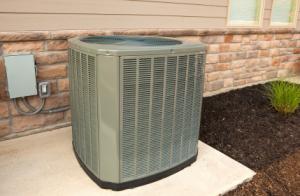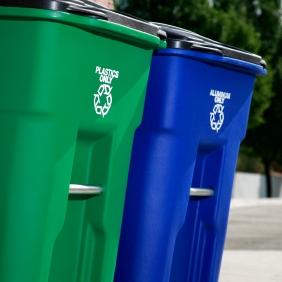Environmental Resources Dashboard
The city of Los Altos is actively implementing strategies outlined in the Climate Action and Adaptation Plan (CAAP), which was adopted by the City Council in March 2022. The CAAP pursues the goal of climate neutrality by 2035 and sets the City on a path to climate resilience.
The Environmental Resources Dashboard has been created in order to present foundational data covering aggregate annual resource use, GHG emissions, and associated trends. Additionally, the information will describe resource use and GHG emissions data relative to the City’s CAP targets, which will help track how effectively reduction goals are being met year over year.

Natural Gas Use Trends
Residential Natural Gas Use
- Total residential natural gas use and related emissions were fairly steady between 2005 and 2018
- Warm winters in 2014 and 2015 resulted in significantly less gas being used for space heating
- Average monthly household usage has been fairly steady when normalized for weather
- While homes are generally becoming better insulated and more energy efficient, square footage is increasing and offsetting efficiency gains
Commercial Natural Gas Use
- Commercial natural gas use and associated GHG emissions have been steady between 2005 and 2018
- New commercial buildings are better insulated and more energy efficient, but the number of new buildings is low
- Warm winter conditions in 2014 and 2015 significantly reduced gas used for heating
- Year to year, commercial sector natural gas use is significantly influenced by current economic conditions
Click here to view charts (Not available yet)

Electricity Use Trends
Residential Electricity Use
- Use of grid electricity was 12% lower in 2018 than 2005, due to growth in residential solar, and more efficient lighting, appliances and electronics
- Los Altos households used an average of 639 kWh of grid electricity per month in 2018, 11.7% less than in 2005
- In 2018, the PG&E energy mix was much less CO2-intensive than in 2005, as more renewable energy is on the grid
- Grid electricity use has fallen, and CO2 intensity has also decreased; overall GHG emissions from residential electricity are 97.8% lower in 2018 than 2005
Commercial Electricity Use
- Overall commercial electricity was virtually unchanged between 2018 and 2005
- Commercial energy efficiency has been improving slowly, though overall economic conditions tend to influence usage the most
- The PG&E energy mix is much less CO2 intensive in 2018 than in 2005, as additional renewable energy is now on the grid
- Overall GHG emissions due to commercial electricity use are 97% lower in 2018 than in 2005
Residential and Commercial Electrical Emissions
Residential and Commercial Electrical Usage

Water Use Trends
Residential Water Use
- Residential water use in Los Altos is three times higher in the summer than in the winter, due mainly to landscape irrigation
- In 2019, Los Altos reduced usage by 25% compared to 2013; monthly average residential usage for 2013 is shown below
Water Usage Summary and Trends, by Sector
- Households use the majority of water in Los Altos, an average of 438 gallons per household per day in 2019
- In 2019, single family households in Los Altos used a total of over 1.8 billion gallons of water, an average of 170,000 gallons/household/year
Click here to view charts (Not Yet Available)

Solid Waste Disposal
- Waste diverted has gone up, and waste sent to landfill has gone down, primarily due to MTWS sending commercial MSW to be sorted in 2018 and 2019.
- Waste removed by non-Mission Trails haulers has stayed somewhat steady. This is primarily construction debris
- Percent of waste diverted from the landfill by MTWS has increased to 70%, primarily due to MTWS sending commercial MSW to be sorted.
- Landfill waste generated per person per day has dropped to 2.4 pounds per person/day, a 14% reduction. This is primarily due to recycling and composting by Los Altos residents.
Click here to view charts (Not Yet Available)

Vehicle Miles Traveled Trends
- Vehicles represent the largest source of GHGs in Los Altos
- Non-commercial vehicles account for 96% of the on-road GHGs
- More fuel-efficient and electric vehicles (EV) are reducing GHGs per vehicle mile traveled
- From 2015 to 2018, GHGs from on-road traffic have dropped by 11%
- Gasoline use by on-road non-commercial vehicles dropped by 11% from 2015 to 2018, while electricity usage from EVs increased by 230%
- Total vehicle miles traveled by non-commercial vehicles has been fairly constant since 2015, dropping just 5% in 2018
